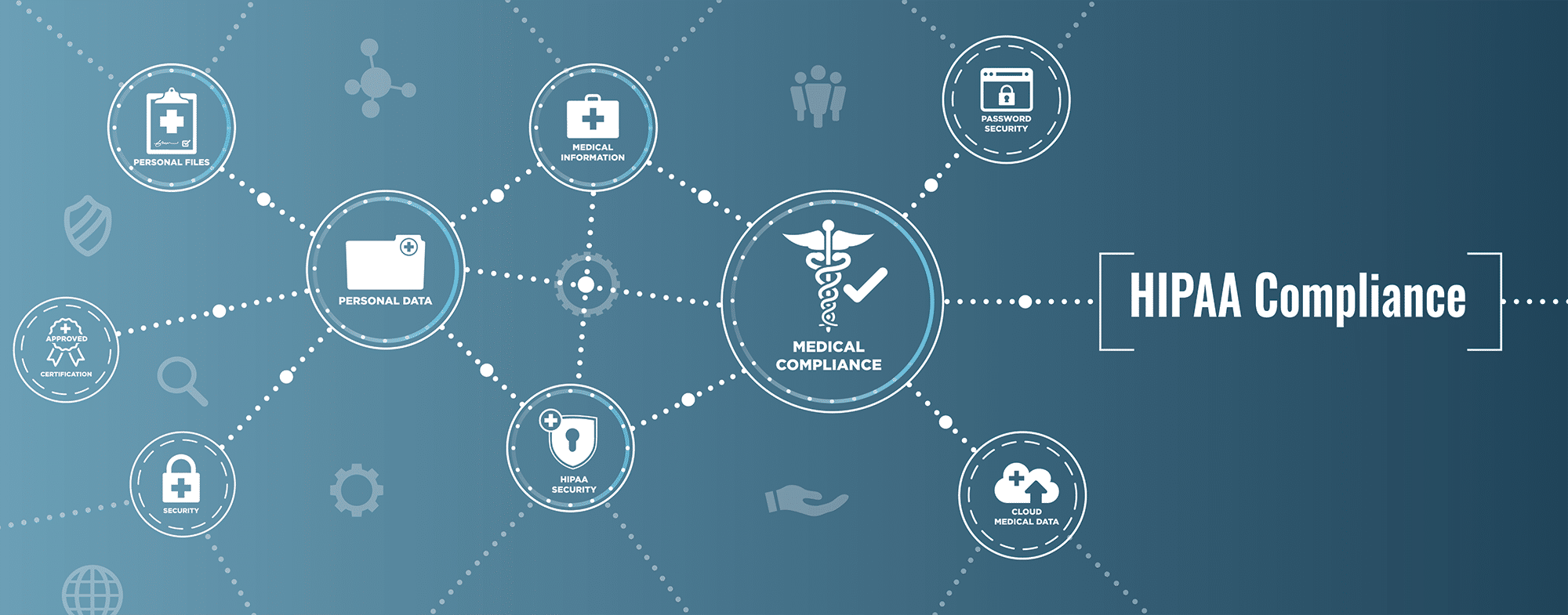Is your organization prepared to defend against today’s cyber threats? From the WannaCry ransomware attack to the Equifax data breach, it’s clear that no company is immune to cybersecurity threats. In fact, 43% of all data breaches involve small and medium-sized businesses, meaning that your company is just as likely to be targeted as a Fortune 500 company.
Implementing a vulnerability management program is one of the best ways to protect your organization against cyber threats. Vulnerability management is the process of identifying, classifying, remediating, and mitigating vulnerabilities in your IT systems. By regularly assessing your system for vulnerabilities, you can patch them before attackers can exploit them.
Vulnerability management is a critical component of any cybersecurity program, yet many organizations still do not have a formal vulnerability management program in place. In fact, only 38% of small businesses have a formal program, and less than half of all businesses have a dedicated staff for vulnerability management.
If your organization does not have a formal vulnerability management program, now is the time to implement one. Doing so can reduce the risk of a data breach, meet compliance requirements, and improve your overall security posture.
Vulnerability Management: Is It Just A Buzzword?
The term “vulnerability management” has become a buzzword in the cybersecurity industry, but what does it really mean? Vulnerability management is the process of identifying, classifying, remediating, and mitigating vulnerabilities in systems and applications. It’s a continuous process that should be embedded into an organization’s overall security operations. The goal is to reduce the risk of exploits and attacks by keeping systems and applications up-to-date and patched.
Organizations face a constant barrage of new vulnerabilities, so it’s essential to have a vulnerability management program in place to address them promptly and effectively. A vulnerability management program must be tailored to the organization’s specific needs to be effective. It should be based on a risk-based approach and consider the organization’s overall security posture.
Do All Organizations Need Vulnerability Management?
The truth is, if you’re running any kind of digital operation, you need a vulnerability management program. Whether you’re a small business or a large enterprise, you need to be able to identify and address vulnerabilities in your systems and applications. Even if you’re not running any digital operations, if you’re using any kind of software, you’re vulnerable to attack.
This can be as small as using a popular web browser or as large as running a complex network of systems and applications. In either case, you need to be aware of the vulnerabilities in your software and have a plan to address them.
Back in the day, security used to mean locks on the front door and a high-quality safe. Now, security is much more complex. With the rise of the internet and digital technologies, security must now be multi-layered. Locks and safes are still important, but they’re just one part of a much larger security system. The same is true for vulnerability management. It’s just one part of a larger security operations program, digitally and physically, from hardware to software. The goal is to make it as difficult as possible for attackers to exploit vulnerabilities and gain access to systems and data.
What Are The Components Of A Vulnerability Management Program?
A vulnerability management program has four main components:
Asset management: This is the process of identifying and classifying assets. It includes inventorying systems and applications, as well as tracking and categorizing them by risk.
Vulnerability assessment: This is the process of identifying, classifying, and prioritizing vulnerabilities. Vulnerability assessments can be conducted manually or with automated tools.
Risk management: This is the process of assessing the risks posed by vulnerabilities and deciding how to mitigate them. Risk management includes deciding which vulnerabilities to patch and which to leave unpatched.
Remediation: This is the process of patching or otherwise mitigating vulnerabilities. Remediation can be conducted manually or with automated tools.
The components of a vulnerability management program work together to help organizations reduce the risk of exploits and attacks. By keeping systems and applications up-to-date and patched, organizations can reduce the attack surface and make it more difficult for attackers to exploit vulnerabilities.
What Are The Benefits Of Vulnerability Management?
There are many benefits to implementing a vulnerability management program, including:
Reduced risk of exploitation: By patching vulnerabilities, you can reduce the risk of them being exploited by attackers.
Improved security posture: You can improve your overall security posture by continuously assessing and addressing vulnerabilities.
Compliance: Many compliance standards, such as PCI DSS and HIPAA, require vulnerability management. Implementing a vulnerability management program can help ensure compliance with these standards.
Achieving these benefits requires a commitment to continuous vulnerability management. Organizations must continuously assess their systems and applications for vulnerabilities and patch them in a timely manner.
Can A Vulnerability Management Program Help Prevent Data Breaches?
A data breach is one of the scariest things that can happen to any business. It compromises not only the security of your company but also the trust of your customers.
Data breaches can happen to any business, no matter how big or small, and they can compromise any type of data, from financial information to customer records. A vulnerability management program can help prevent data breaches by identifying and addressing your systems and processes vulnerabilities.
A vulnerability management program includes a number of steps, including vulnerability assessment, patch management, and incident response. Taking these steps can help prevent data breaches and protect your business, customers, and reputation.
Reputation Shapes Everything
Your business’s reputation is one of its most valuable assets. It’s what sets you apart from your competitors and attracts customers to you in the first place. A data breach can damage your reputation and make it difficult for customers to trust you with their data.
A data breach can also have a ripple effect, impacting not just your business, but also your employees, your partners, and your customers. A data breach can cause financial losses, legal problems, and a loss of customer trust.
That’s why it’s so important to take steps to prevent data breaches, and a vulnerability management program is a key part of that effort.
What Makes Your Company Vulnerable?
Vulnerability management systems just don’t protect you in the same way as a firewall or an intrusion detection system. They don’t automatically keep hackers out or stop them from getting in. Instead, they help you identify and fix the security holes in your systems before hackers can exploit them.
There are many factors that can make a company vulnerable to attack, but some of the most common include:
Using outdated or unpatched software: This is one of the most common ways that hackers can gain access to a system. Outdated software often has known security flaws that attackers can easily exploit. Even security systems you’re actively paying for can be rendered useless if you’re not keeping them up to date.
Failing to properly secure access to sensitive data: If you’re not properly securing access to sensitive data, it’s only a matter of time before someone who shouldn’t have access to it gets their hands on it. This could be anything from customer credit card information to employee social security numbers.
Relying on weak passwords: Passwords are often the first line of defense against hackers, but they’re only as strong as the weakest link. If you’re using weak passwords, or if your employees are using the same password for multiple accounts, it’s only a matter of time before someone gets access to your systems. Regularly updating and enforcing strong password policies can help mitigate this risk.
Treating security as an afterthought: Security should be built into every aspect of your business, from the way you develop software to the way you handle customer data. If you’re not thinking about security at every step of the way, you’re leaving yourself open to attack.
Can Vulnerability Management Benefit My Business?
Vulnerability management can benefit any business that relies on computers and networks to operate. By regularly assessing your systems for security vulnerabilities, you can help ensure that your data and operations are protected from attack.
In addition to protecting your business from attack, vulnerability management can also help you comply with industry regulations, such as the Payment Card Industry Data Security Standard (PCI DSS). Complying with these regulations can help you avoid costly fines and penalties, and it can also help you build trust with your customers and partners.
Your business needs a vulnerability management system if:
- You use computers and networks to store or process sensitive data
- The security of your systems is critical to your operations
- You’re required to comply with industry regulations, such as PCI DSS
- You want to build trust with your customers and partners
- Money, time, or other resources would be lost if your systems were breached
- A breach of your systems could cause reputational damage to your business
- Customers share private or confidential information with you, such as credit card numbers or health records
- Winning and keeping customers requires a high level of security and privacy
The Time It Takes Is Time Worth Taken
The amount of time required to conduct a vulnerability assessment and address identified security issues can vary greatly depending on the size and complexity of your organization. However, even a small investment of time can pay off by helping you avoid a data breach or other security incident.
When deciding whether to implement a vulnerability management program, you should consider the potential costs of not taking action. These costs can include losing sensitive data, damage to your reputation, and regulatory penalties.
The Bottom Line
Vulnerability management is an essential part of any security program.
By regularly assessing your systems for security vulnerabilities, you can help ensure that your data and operations are protected from attack. When deciding whether to implement a vulnerability management program, you should consider the potential costs of not taking action. These costs can include the loss of sensitive data, damage to your reputation, and regulatory penalties.
When it comes to the security of your business, it’s better to be safe than sorry.






